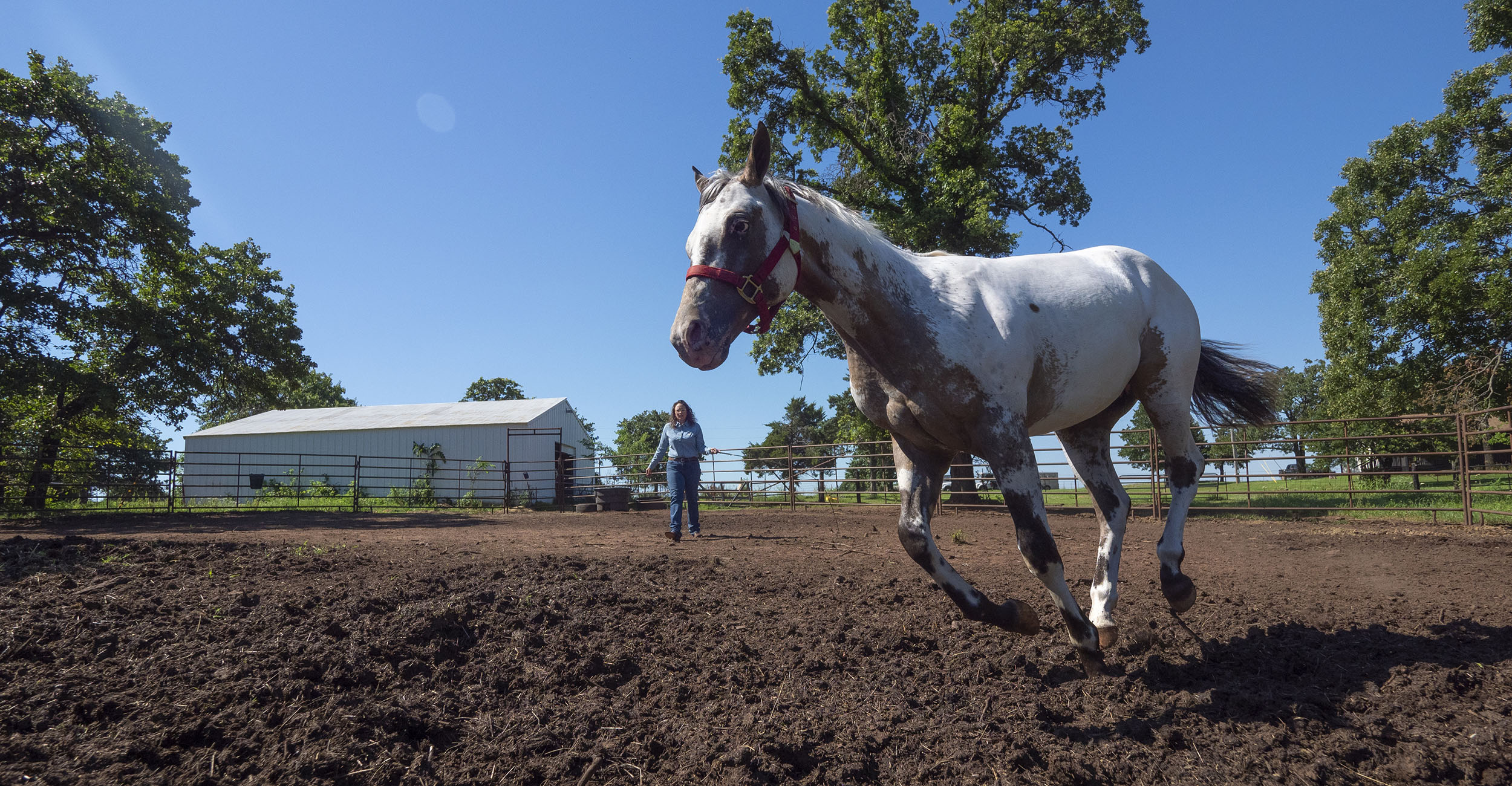
Know how horses respond to hot summertime temperatures
Monday, June 28, 2021
Media Contact: Donald Stotts | Agricultural Communications Services | 405-744-4079 | donald.stotts@okstate.edu
Equine owners would find life easier this summer if their horses could communicate as well as Mr. Ed from the popular 1960s television sitcom. The talking equine always had something to say; real horses require closer attention to understand their signals.
During the hot summer, for example, it is the responsibility of the equine manager to ensure horses are drinking enough water to maintain good health and performance, and to know when to back off an animal’s level of activity, said Kris Hiney, Oklahoma State University Extension equine specialist.
“Add the values of the temperature and humidity to get the heat index when determining whether to reduce animal activity,” she said. “Depending on the environmental temperature and the animal’s workload, it is possible for a horse to become dehydrated in as little as two to three hours.”
Complicating matters, horses may not drink enough even when provided water, Hiney said.
Like humans, horses dissipate most of their excess body heat through sweating. When a person sweats, the electrolyte concentration goes up in the blood, resulting in thirst. A horse’s blood does not increase in electrolyte concentration with sweat loss so the animal may experience a reduced stimulus for thirst.
Studies show horses will cool themselves normally — unless dehydrated or fatigued — if the heat index is less than 130. A heat index that exceeds 150 will require more assistance in cooling. If the heat index exceeds 170, consider a different activity, Hiney said.
To enhance evaporate cooling, apply cool — not cold — water to areas that have large blood vessels near the surface such as the inside of the legs and the neck, said Dr. Rosslyn Biggs, OSU Extension veterinarian and director of continuing education for the university’s College of Veterinary Medicine.
“Water temperature is key,” Biggs said. “Cold water can result in vasoconstriction which can limit blood flow to the horse’s skin. Continuous running water also has been shown to cool the horse faster. If a hose is available, keep applying water to the horse.”
Convection — heat that is lost due to air movement — is another major way that an animal loses heat. Supplying fans or keeping the horse in an area with wind flow is ideal. Fans with higher velocities provide more effective cooling.
Also, take advantage of conductive cooling, wherein a horse will transfer heat through space to any object cooler than it. For example, standing under trees allows a horse to radiate some heat to leaves, which are continually cooled by their own evaporation.
Long trips may require schedule changes to avoid the hottest time of day, Hiney said, and the muscle work of balancing in a trailer during a road trip can put an additional heat load on a horse.
For more information about horse care and best management practices, visit the OSU Horse site online. OSU Extension video segments also are available online through OState TV and the agricultural television show SUNUP.
